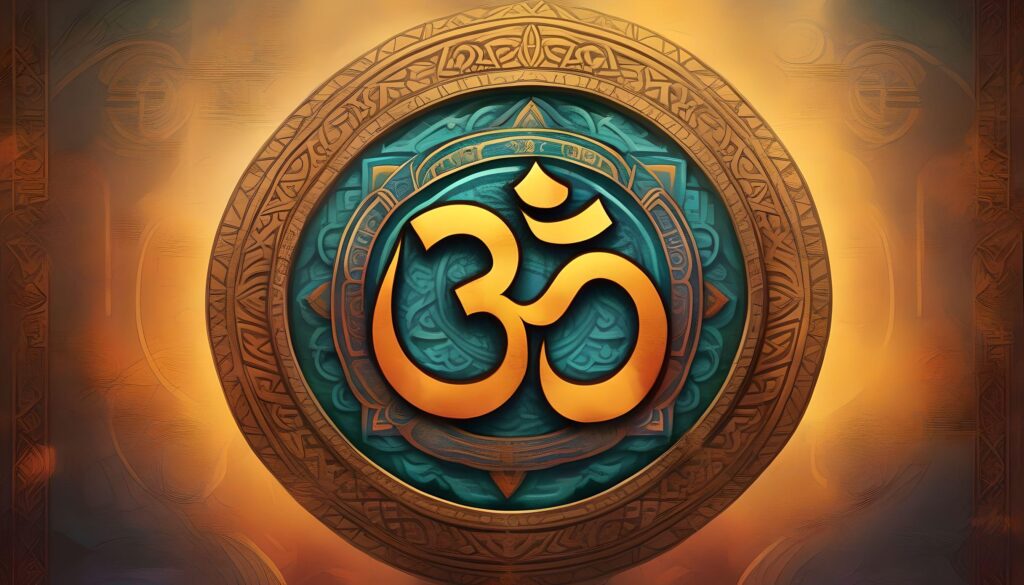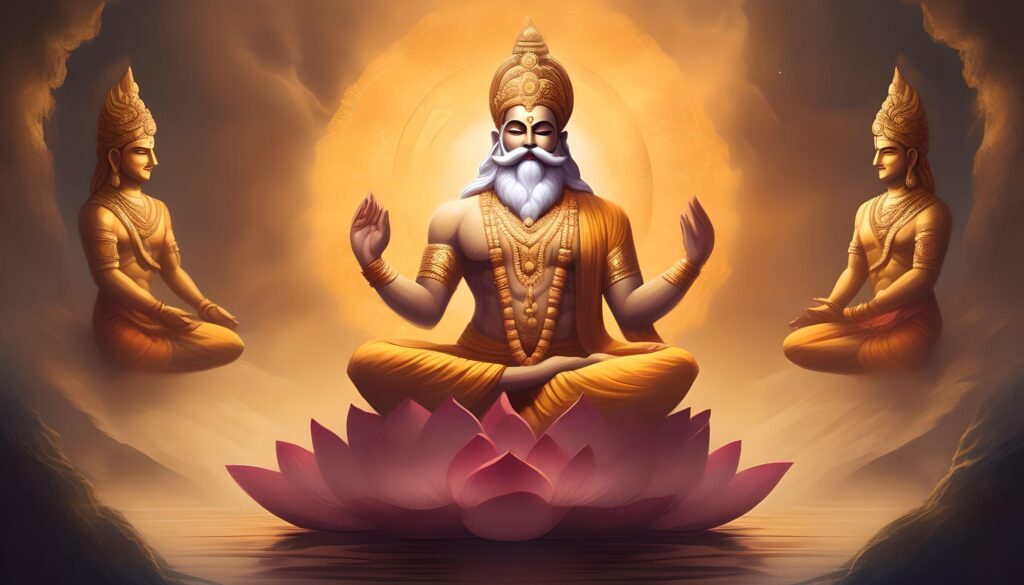Surya Namaskar: The Ultimate Guide to Sun Salutations
Introduction
Sun Salutations, alternatively referred to as Surya Namaskar, comprise a series of yoga postures designed to honor the sun. In addition to serving as a warm-up exercise, this age-old practice has a lengthy historical background and offers a multitude of physical and mental advantages. This exhaustive guide aims to explicate the significance and mythology surrounding Surya Namaskar, examine the physical and mental health advantages associated with the practice, analyze the various variations and tempos of the Sun Salutations, and furnish detailed guidelines for both practicing and instructing Sun Salutations.
Table of Contents
- What Is the Meaning of Surya Namaskar Kriya?
- The Significance of Surya Namaskar
- The Power of Sun Salutations
- Kriya: The Action of Surya Namaskar
- The Mythology and Tradition Behind Surya Namaskar
- The Yin and Yang of the Sun
- Greeting the Rising Sun
- Invigorating the Body with Solar Energy
- Why Should You Practice Surya Namaskar? Benefits of Sun Salutations
- Physical Health Benefits
- Improved Blood Circulation
- Increased Oxygenation
- Boosts Gut Health
- Mental Health Benefits
- Sharpened Focus and Self-Confidence
- Stress and Anxiety Relief
- Improved Sleep Quality
- Physical Health Benefits
- How Many Sun Salutations Should You Do Daily?
- Finding the Right Balance
- Gradually Increasing the Number of Rounds
- Considering Individual Fitness Levels
- How to Choose the Right Pace in Surya Namaskar
- Slow Pace
- Intermediate Pace
- Fast Pace
- How to Do Surya Namaskar: Classical Vs. Modern Sun Salutations
- Modern Surya Namaskar A (Ashtanga Vinyasa)
- Classical Surya Namaskara (Hatha Yoga)
- Key Differences Between Classical & Modern Surya Namaskar
- How to Teach Surya Namaskar (Hatha Yoga)
- Step-by-Step Instructions for Classical Surya Namaskar
- Modified Version: Easy Classical Surya Namaskara
- Teaching Tips and Modifications
- Exploring the Sun Salutations Variations
- Surya Namaskar with Props
- Surya Namaskar for Seniors
- Surya Namaskar for Pregnant Women
- Surya Namaskar for Children
- Frequently Asked Questions about Surya Namaskar
- Can Surya Namaskar Help with Weight Loss?
- Is It Safe to Practice Surya Namaskar During Menstruation?
- Can Surya Namaskar Replace Other Forms of Exercise?
- Yoga Philosophy and Surya Namaskar
- The Spiritual and Energetic Significance of Sun Salutations
- Connecting with the Divine Energy of the Sun
- Additional Resources for Surya Namaskar
- Books and Websites
- Online Videos and Tutorials
- Workshops and Retreats
- Conclusion
Now, let’s dive into the details and uncover the secrets of Surya Namaskar.
1. What Is the Meaning of Surya Namaskar Kriya?
Surya Namaskar is not merely a sequence of yoga postures; rather, it is a kriya, or a profoundly significant action. The Sanskrit terms “namaskar” and “surya” mean salute or salutation, respectively. Hence, Surya Namaskar may be interpreted as an expression of reverence towards the sun. It is a twelve-step dynamic sequence designed to stimulate the mind, warm the body, and establish a connection with the solar energy within.
As the location of one’s personal power and vitality, the solar plexus is linked to the Surya Namaskar technique. By engaging in this kriya, one can stimulate and direct the solar energy that resides within them, thereby fostering both physical and mental health.
2. The Mythology and Tradition Behind Surya Namaskar
As a divine entity, the sun is revered in Hindu mythology. The solar disc is adorned with the feminine aspect Gayatri, symbolizing the life-giving and nurturing power, and the masculine aspect Surya. The aforementioned duality is indicative of the yin and yang concept, wherein Gayatri personifies the receptive, feminine energy, and Surya represents the active, masculine energy.
By custom, Surya Namaskar is executed with the back to the sun’s ascent. This may appear counterintuitive, but it stimulates the back and vertebrae by allowing us to absorb the sun’s energy from behind. Greeting the ascending sun with a supplication and bow while facing away is a way to express reverence and establish a connection with the sun’s life-giving energy.
Sun Salutations are performed to energize and warm up the body in preparation for the succeeding asana practice. By priming the physical and energetic systems, it facilitates a more profound and gratifying yoga encounter.
3. Why Should You Practice Surya Namaskar? Benefits of Sun Salutations
Surya Namaskar provides an extensive array of advantages pertaining to the physical and mental dimensions of human welfare. In this discourse, we shall examine several pivotal justifications for the integration of Sun Salutations into one’s daily regimen.
Physical Health Benefits
Improved Blood Circulation
While progressing through the series of postures in Surya Namaskar, an effortless and synchronized bodily motion ensues. This motion facilitates enhanced blood circulation, thereby promoting more efficient delivery of nutrients and oxygen to different organs and tissues. Additionally, improved blood circulation is beneficial for the heart and cardiovascular health as a whole.
Increased Oxygenation
By means of the deep respiration associated with Surya Namaskar, the alveoli in the lungs are enlarged and purified. Alveoli are minute air sacs that facilitate the exchange of oxygen throughout the circulation. The rhythmic respiration incorporated into Sun Salutations improves oxygen delivery to the heart, brain, and other critical organs, thereby increasing the body’s oxygen content. This can increase mental clarity and overall physical endurance.
Boosts Gut Health
By means of the dynamic stretches and motions that comprise Surya Namaskar, the organs of the digestive system are stimulated. This stimulation has the potential to enhance gut health, facilitate digestion, and regulate bowel movements. By massaging the abdominal organs, the combination of twisting, bending, and extending poses promotes healthy digestion and elimination.
Mental Health Benefits
Sharpened Focus and Self-Confidence
Surya Namaskar is a martial art that demands undivided attention and mindfulness. By harmonizing your respiration with your movements, you develop an atmosphere of concentrated awareness. This concentrated focus aids in reducing mental distractions, promoting mental clarity, and calming the mind. Consistently engaging in Sun Salutations can enhance one’s concentration and inspire confidence.
Stress and Anxiety Relief
Surya Namaskar elicits a meditative state of mind due to its rhythmic and fluid style. This characteristic of meditation can aid in the reduction of anxiety, stress, and mental tension. Sun Salutations induce relaxation and foster an inner sense of tranquility through the activation of the parasympathetic nervous system induced by the mindful movements and conscious breathing.
Improved Sleep Quality
Enhancing sleep quality may be facilitated by the combination of physical exertion, deep breathing, and mental relaxation incorporated into Surya Namaskar. Consistent implementation of Sun Salutations into one’s routine contributes to the regulation of the circadian rhythm, alleviation of insomnia, and facilitation of a more rejuvenating and tranquil slumber.
Beyond the aforementioned advantages, Surya Namaskar fosters overall physical fitness, strength, and flexibility. It is a practice that benefits the body and psyche holistically.
4. How Many Sun Salutations Should You Do Daily?
Your daily Sun Salutation routine should be determined by your level of physical fitness, level of experience, and available time. It is imperative to heed your body’s signals and increase the number of rounds progressively as your strength and stamina improve. Novices may begin with five to six cycles and add more as they gain experience.
Typically, nine rounds of Surya Namaskar are performed in classical Hatha Yoga to warm up for the ensuing asana practice. Nevertheless, the optimal number of cycles differs among individuals. Striking a balance between self-exercising and keeping oneself away from excessive strain or fatigue is of utmost importance.
Before beginning a regular Surya Namaskar practice, individuals with pre-existing health conditions or injuries should seek guidance from a certified yoga instructor or healthcare professional. They are capable of offering recommendations and adjustments that are customized to your particular requirements.
5. How to Choose the Right Pace in Surya Namaskar
The rate at which Surya Namaskar is executed is contingent upon an individual’s personal preferences, fitness level, and objectives. Pacing options are primarily classified as sluggish, intermediate, or fast.
Slow Pace
A slower-paced rendition of Surya Namaskar facilitates more profound stretching, heightened bodily awareness, and improved regulation of respiration. Novices can benefit greatly from this tempo, as it permits them to concentrate on correct alignment, technique, and breath-to-movement coordination. A meditative state of mind, flexibility, and mindfulness are all enhanced by slow sun salutations.
Intermediate Pace
The intermediate tempo of Surya Namaskar is characterized by a blend of fluidity and a marginally accelerated cadence. Enhancing muscular endurance and strength, it demands increased physical exertion. Sun Salutations performed at an intermediate tempo can serve as a cardiovascular exercise regimen, enhancing overall fitness and stamina.
Fast Pace
A vigorous execution of Surya Namaskar results in an intense cardiovascular exercise. It facilitates weight loss by stimulating the metabolism and elevating the heart rate. On the contrary, pronounced Sun Salutations demand expertise and a solid understanding of the sequence, given the increased difficulty in sustaining correct form and breathing regulation.
It is crucial to heed to your body and strike a balance between comfort and exertion when determining the appropriate pace. Beginning at a reduced tempo and progressively escalating it as one develops strength, flexibility, and confidence in the sequence is the most effective approach.
6. How to Do Surya Namaskar: Classical Vs. Modern Sun Salutations
Surya Namaskar is known in two primary variations: the traditional iteration implemented in Hatha Yoga, and the contemporary iteration prevalent in Ashtanga Vinyasa Yoga. Although both variations exhibit certain similarities, they diverge with regard to the progression, fluidity, and focal point on particular postures.
Modern Surya Namaskar A (Ashtanga Vinyasa)
Surya Namaskar A, the contemporary iteration of Surya Namaskar, is an essential sequence incorporated into the Ashtanga Vinyasa Yoga curriculum. It consists of nine poses executed with controlled respiration in a specific sequence.
Mountain Pose (Tadasana) is the starting point of the contemporary Surya Namaskar A, which progresses via Forward Fold (Uttanasana), Plank Pose (Phalakasana), and Upward-Facing Dog (Urdhva Mukha Svanasanasana). This variation emphasizes flexibility, strength, and breath-to-movement synchronization.
Classical Surya Namaskara (Hatha Yoga)
The classical rendition of Surya Namaskar is frequently performed in Hatha Yoga and follows a distinct sequence. It promotes flexibility, mindfulness of the breath, and equilibrium through the seamless transition of twelve poses.
Commencing with Mountain Pose (Tadasana), the traditional Surya Namaskar progresses through Forward Bend (Uttanasana), Low Plank (Chaturanga Dandasana), and Cobra Pose (Bhujangasana). This variation emphasizes whole-body stretching, strengthening, and energization.
Differences Between Classical & Modern Surya Namaskar
Although both classical and contemporary iterations of Surya Namaskar offer advantages, discernible distinctions exist between the two schemes. The following are several fundamental differentiations:
Standing forward bend position
The traditional rendition of the standing forward bend (Uttanasana) involves executing the pose while maintaining a rounded back and supple knees, thereby inducing a mild spinal stretch. On the other hand, the contemporary iteration promotes a curled spine and erect knees, thereby facilitating a more profound stretch of the hamstrings.
Stepping back to plank
The traditional rendition of Surya Namaskar involves a return to a plank position after performing Forward Bend, while contemporary iterations frequently incorporate a leap backwards. This dynamic leap necessitates increased strength and coordination.
Lowering to the mat
The classical variation involves deliberate lowering of the body to the mat, wherein the chin, knees, and chest make contact with the earth. In contrast, the contemporary iteration places emphasis on a methodical decrease to the mat while maintaining a full-body Chaturanga Dandasana (Low Plank) position.
Downward-Facing Dog
The classical Surya Namaskar transitions to Downward-Facing Dog (Adho Mukha Svanasana) through a reverse stride, following the forward bend. In the contemporary rendition, practitioners frequently return to this pose. Downward-Facing Dog is a pivotal position in both variations, strengthening the limbs and legs and providing a full-body stretch.
Both traditional and contemporary iterations of Surya Namaskar provide distinct advantages. Investigate and engage in both techniques in order to determine which one best complements your physique and practice.
7. How to Teach Surya Namaskar (Hatha Yoga)
Clarity of instruction, correct sequencing, and an awareness of the benefits and modifications for various pupils are all essential components of teaching Surya Namaskar. In this article, we shall furnish detailed guidelines for instructing Hatha Yoga practitioners in the classical Surya Namaskar.
Classical Surya Namaskar
- Start in Mountain Pose (Tadasana), standing with your feet hip-width apart, palms together in front of your heart.
- Inhale and raise your arms overhead, arching back slightly, and look up.
- Exhale and fold forward, bringing your hands to the mat beside your feet. Bend your knees if necessary.
- Inhale and step your right foot back into a lunge, keeping your left knee directly above your left ankle. Look up.
- Exhale and step your left foot back to Plank Pose (top of a push-up position). Keep your body in a straight line.
- Lower your knees, chest, and chin to the mat as you exhale, keeping your hips lifted.
- Inhale and slide forward into Cobra Pose, lifting your chest off the mat and keeping your legs engaged.
- Exhale and lift your hips, coming into Downward-Facing Dog. Press your hands into the mat, engage your core, and lengthen your spine.
- Inhale and step your right foot forward between your hands, coming back into a lunge. Look up.
- Exhale and step your left foot forward to meet your right foot, folding forward into a forward bend.
- Inhale and rise up, sweeping your arms overhead and arching back slightly. Look up.
- Exhale and bring your hands back to your heart, returning to Mountain Pose.
Repeat the sequence, stepping your left foot back in step 4, to complete one round of classical Surya Namaskar.
Easy Classical Surya Namaskara
For beginners or those with limited mobility, modifications can be made to make Surya Namaskar more accessible. Here is a modified version of classical Surya Namaskar:
- Begin in Mountain Pose (Tadasana), standing with your feet hip-width apart.
- Inhale and raise your arms overhead, keeping them parallel to each other.
- Exhale and fold forward, bending your knees as needed.
- Inhale and step your right foot back into a lunge, placing your knee on the mat.
- Exhale and step your left foot back to a kneeling plank position.
- Lower your hips to the mat and untuck your toes, coming into Sphinx Pose.
- Inhale and lift your chest, keeping your forearms on the mat.
- Exhale and lift your hips, coming into Child’s Pose.
- Inhale and step your right foot forward between your hands, returning to a lunge with your knee on the mat.
- Exhale and step your left foot forward to meet your right foot, folding forward into a forward bend.
- Inhale and rise up, sweeping your arms overhead.
- Exhale and bring your hands back to your heart, returning to Mountain Pose.
The modified version allows for a gentler practice while still providing the benefits of Surya Namaskar.
When teaching Surya Namaskar, it is crucial to emphasize proper alignment, breath awareness, and modifications for different levels of students. Encourage students to move with their breath and maintain a steady, relaxed rhythm throughout the sequence.
8. Exploring the Sun Salutations Variations
Adaptations and modifications can be made to Surya Namaskar to accommodate various populations and specific requirements. Consider the following variations of Sun Salutations:
Surya Namaskar with Props
The incorporation of supports, including bolsters, blocks, or straps, can augment the performance of Surya Namaskar. Students can utilize props to achieve proper alignment, enhance their stability, and accommodate any physical limitations or injuries. As an illustration, in Forward Bend, blocks may be employed to bring the floor in closer proximity to the palms; in Warrior I, a strap may be utilized to aid in the maintenance of appropriate alignment.
Surya Namaskar for Seniors
In order to enhance the accessibility and safety of Surya Namaskar for seniors or individuals with limited mobility, certain modifications may be implemented. Potential adjustments could consist of utilizing a chair for support, limiting the extent of motion, or integrating light motions that emphasize joint health and stability.
Surya Namaskar for Pregnant Women
Modifications can be made to Surya Namaskar during pregnancy in order to accommodate the evolving requirements and comfort of expectant mothers. It is imperative to prioritize light stretching routines, refraining from profound backbends and twists. Promoting adjustments, such as extending the stance or employing objects for assistance, may facilitate the safe and comfortable performance of Sun Salutations during pregnancy.
Surya Namaskar for Children
Children may find Surya Namaskar to be an entertaining and engrossing method to increase their body awareness, physical activity, and mindfulness. Simplified iterations of Sun Salutations that integrate narratives and playful components can be executed by children, rendering the practice more pleasurable and approachable.
It is critical to modify the execution of Surya Namaskar in accordance with the unique requirements and capabilities of each individual. You can ensure that all individuals are able to benefit from Sun Salutations by offering modifications and substitutes.
9. Frequently Asked Questions about Surya Namaskar
Can Surya Namaskar Help with Weight Loss?
One may find Surya Namaskar to be a beneficial supplement to a weight loss regimen. In addition to increasing heart rate and calorie expenditure, the fluidity and motion of Sun Salutations can stimulate the metabolism. It is essential to note, however, that weight loss is a holistic process requiring adjustments in lifestyle, a balanced diet, and regular exercise.
Is It Safe to Practice Surya Namaskar During Menstruation?
Performing Surya Namaskar while menstruating is a matter of personal preference. While certain poses may be modified or avoided by others as a means to alleviate menstrual discomfort, moderate stretching and movement during Sun Salutations may be beneficial for some women. During this time, it is advised that you pay attention to your body’s signals, respect your energy levels, and make adjustments as necessary.
Can Surya Namaskar Replace Other Forms of Exercise?
Although Surya Namaskar imparts mental and physical health advantages, it should not be regarded as a substitute for alternative exercise regimens. It is a comprehensive exercise regimen that enhances a balanced physical fitness regimen. The integration of diverse exercise modalities—such as strength training, flexibility exercises, and cardiovascular activities—may contribute to a more holistic approach towards attaining optimal physical fitness.
10. Yoga Philosophy and Surya Namaskar
Surya Namaskar, apart from its physiological and psychological advantages, possesses profound spiritual and energetic implications within the realm of yoga philosophy. It is common to associate the sun with the divine consciousness, as it is symbolic of illumination, vitality, and wisdom.
In addition to honoring the external sun, Surya Namaskar establishes a connection with the interior sun, the divine spark that resides within us. The series of postures symbolizes the sun’s traversal of the heavens, which in turn symbolizes the recurring patterns of vitality, revitalization, and metamorphosis.
By executing the sequence of movements in Surya Namaskar, one can foster a heightened level of consciousness, appreciation, and rapport with the universal life force. It is an opportunity to delve into your infinite potential by harmonizing your body, mind, and spirit.
11. Additional Resources for Surya Namaskar
To deepen your understanding and practice of Surya Namaskar, here are some additional resources you may find helpful:
- Books and Websites: Explore books on yoga philosophy, asana practice, and Surya Namaskar variations. Websites and online platforms offer tutorials, articles, and videos on Sun Salutations.
- Online Videos and Tutorials: Follow along with online videos that provide step-by-step instructions and demonstrations of Surya Namaskar.
- Workshops and Retreats: Attend workshops or retreats focused on Surya Namaskar to deepen your practice, connect with experienced teachers, and explore different variations and approaches.
Remember that the journey of Surya Namaskar is a personal one, and there is always more to learn and discover. Continued exploration and practice will help you unlock the full potential of this ancient and transformative sequence.
12. Conclusion
The salutation to the sun, Surya Namaskar, is an efficacious exercise that imparts advantages of a physical, mental, and spiritual nature. Enhancing one’s daily regimen with Sun Salutations may result in heightened flexibility, strength, concentration, and general state of wellness. Whether you opt for the traditional or contemporary rendition, engaging in Surya Namaskar enables you to establish a connection with the solar energy and reawaken your inner luminosity.
Keep in mind the following as you begin your Surya Namaskar practice: pay attention to your body, respect your limitations, and operate in a mindful manner. By consistent commitment and maintaining a receptive attitude, Sun Salutations have the potential to revolutionize and enhance one’s yoga regimen. Perceive the luminosity and warmth of the sun as you perform the Surya Namaskar sequence, and allow it to illuminate your journey towards comprehensive well-being.
Namaste.








